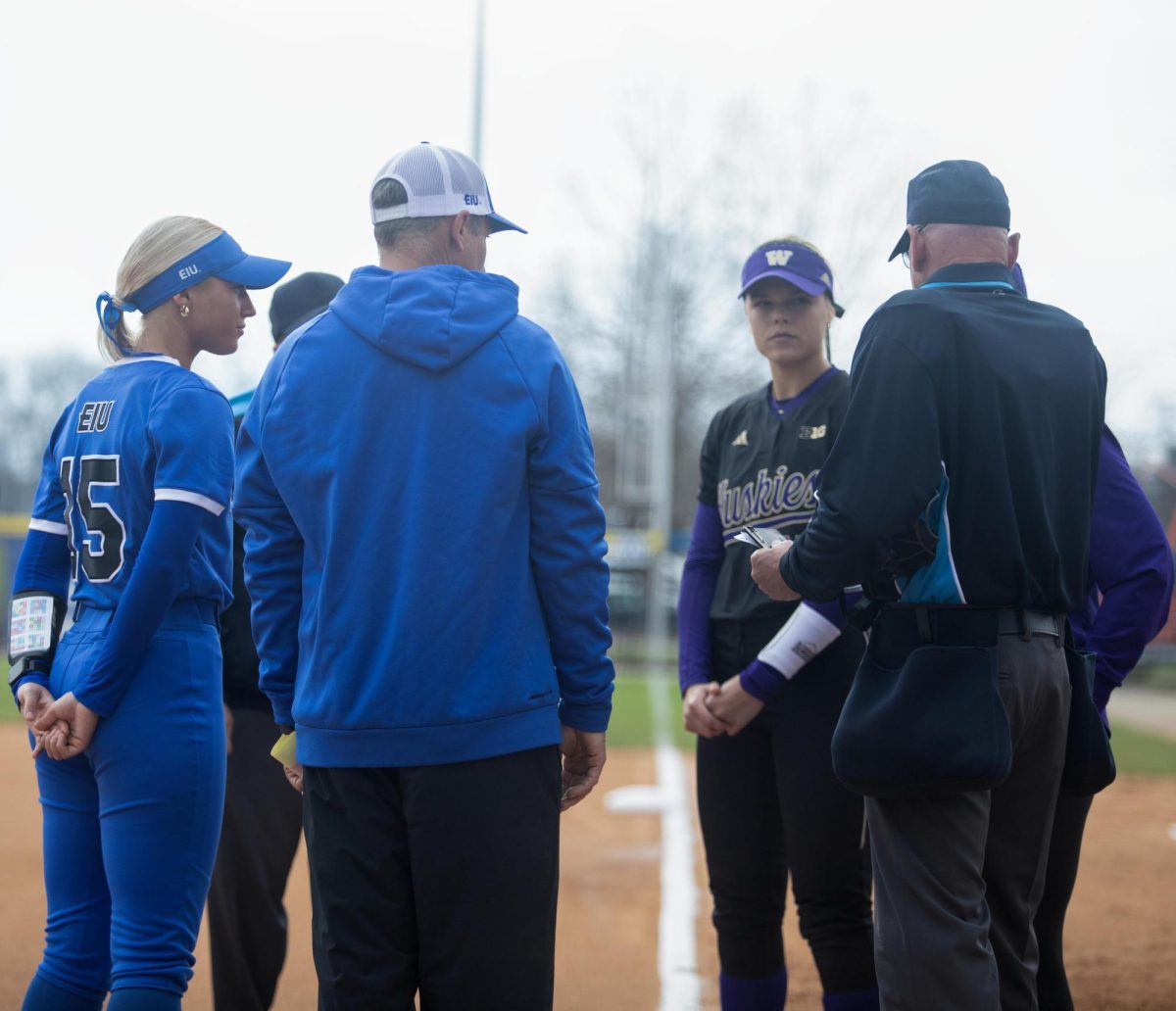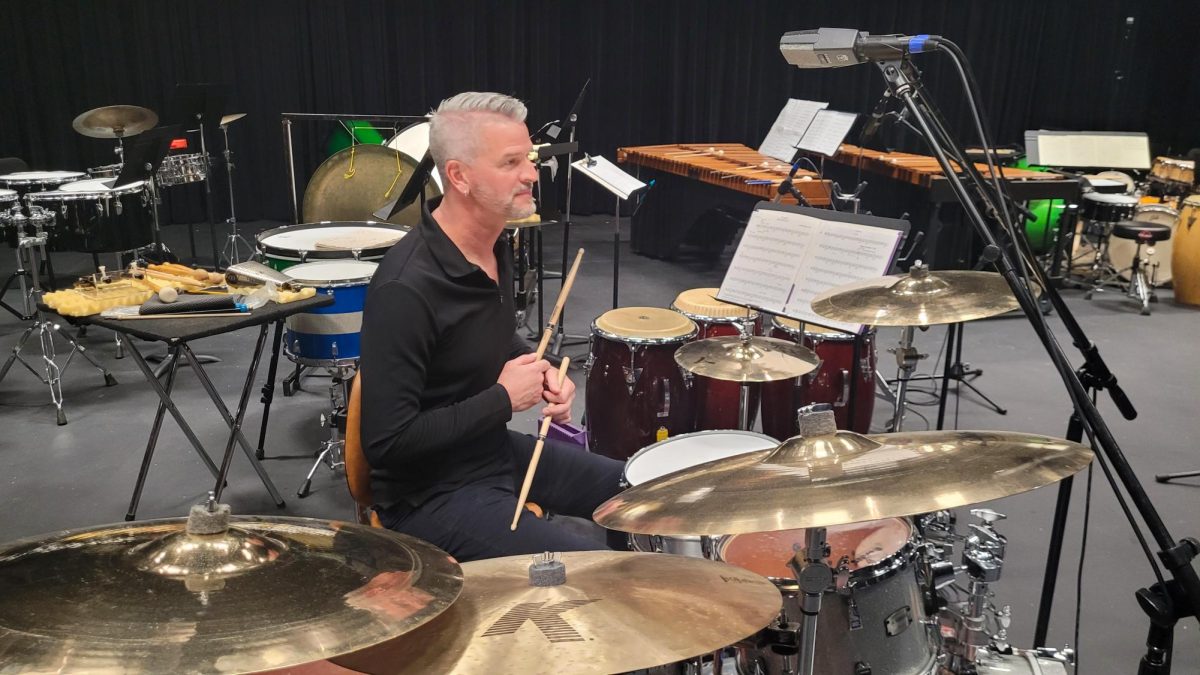Column: Reverse legalization of brass instruments
November 30, 2015
Nearly a year ago, Drum Corps International’s Board of Directors ruled to legalize the on-field use of all brass-family instruments.
This landmark ruling brought French horns, trombones, flugelhorns, and specialty trumpets onto the performance stage, away from their previous positions as specialized solo instruments, stored behind the front ensemble.
Major corps, like Santa Clara Vanguard and the Madison Scouts, have already embraced this ruling.
It opens up musical opportunities previously unreachable to drum corps musicians. The ruling was compared to 2008’s legalization of synthesizers and front ensemble amplification, and the move from unvalved G bugles to three-valve B-flat instrumentation in its broad scope and vision.
I’m entirely against the ruling.
I can’t claim to be among the ranks of the old-school drum corps fans in their take on the ruling. The fact that the activity has strayed from its roots does not bother me. I don’t long for the days of starting lines and pistol starts, nor a time characterized by high mark time and flanking maneuvers. Prefabricated synthesizer tracks, vocals, and amplified marimbas don’t intimidate me.
My disapproval of unvalved brass straying beyond the front sideline is a purely mechanical opinion. Some instruments simply were not designed with motion in mind.
I understand: almost all high school and college ensembles incorporate trombones and sousaphones into their field show.
However, drum corps in an entirely different beast.
Drum corps ensembles often goes weeks at a time without a stable repair shop in view (and no, the Brass Doctor’s ramshackle truck doesn’t count), and instruments must survive though on-field collisions, loading and unloading procedures, weather wear from dust, water, and heat, and heavy use. The only instruments that can successfully withstand a drum corps season are sturdily built valved styles of instrument.
French horns and trombones, from a repair standpoint, are not designed to be moved about outdoors for long periods of time.
Trombones in particular are very easy to damage; a single strike to a trombone’s main body can put the instrument’s slides out of alignment and may obstruct operation, much more so than in valved instruments.
Slides are temperamental, and often require full repair shops to realign. Very few mobile repair shops, which are the bread and butter of instrument repairs during the drum corps season, pack enough equipment to properly attend to misaligned trombone inners.
French horns, on the other hand, belong to a rotary family of brass instruments. While rotors are slightly harder to damage than valves, their damage is very hard to reverse. Even in a full repair shop manned by skilled repair personnel, rotor service often takes well over two hours, much longer than the time any drum corps has to spare for instrument maintenance.
Field repairs, a secondary staple of drum corps instrument care, are nigh-impossible on this family of instrument, as even the most basic of rotary assembly and disassembly techniques are cryptic to most musicians.
Sousaphones are another beast entirely. These instruments were not designed to produce a pleasing sound as much as they were designed to be visually appealing. Their wraparound, forward facing design was created with user comfort and aesthetic pleasure, rather than sound quality, in mind.
I’m not sure why our league would bother legalizing sousaphones when we already rely on contrabass bugles and tubas, which are not only mechanically and sonically superior, but also take up far less room in storage and travel than sousaphones.
Though I hate to align myself to the Drum Corps Planet crowd, how many more rule changes are we away from legalizing the use of woodwinds in drill formations? How far are we stepping away from our roots as efficient, militaristic ensembles? I appreciate the musical innovation, but we can’t sacrifice functionality for form.
I love the integration of nonvalved brass instruments in drum corps shows. They add so much to the soundscape, and they have distinctive voicing that cannot be fully covered by the five standard valved brass or by the unfortunately robotic quality of the synth. But there’s no excuse for weak construction, no matter how much we love these voices.
Shelby Niehaus is a junior English language arts major. She can be reached at 581-2812 or scniehaus@eiu.edu.






![[Thumbnail Edition] Eastern Illinois softball senior infielder Briana Gonzalez resetting in the batter's box after a pitch at Williams Field during Eastern’s first game against Southeast Missouri State as Eastern split the games as Eastern lost the first game 3-0 and won the second 8-5 on March 28.](https://www.dailyeasternnews.com/wp-content/uploads/2025/04/SBSEMO_11_O-1-e1743993806746-1200x692.jpg)






![[Thumbnail Edition] Junior right-handed Pitcher Lukas Touma catches at the game against Bradley University Tuesday](https://www.dailyeasternnews.com/wp-content/uploads/2025/03/MBSN_14_O-e1743293284377-1200x670.jpg)

![[Thumbnail Edition] Senior Foward Macy McGlone, getsw the ball and gets the point during the first half of the game aginst Western Illinois University,, Eastern Illinois University Lost to Western Illinois University Thursday March 6 20205, 78-75 EIU lost making it the end of their season](https://www.dailyeasternnews.com/wp-content/uploads/2025/03/WBB_OVC_03_O-1-e1743361637111-1200x614.jpg)







































![The Weeklings lead guitarist John Merjave [Left] and guitarist Bob Burger [Right] perform "I Am the Walrus" at The Weeklings Beatles Bash concert in the Dvorak Concert Hall on Saturday.](https://www.dailyeasternnews.com/wp-content/uploads/2025/03/WL_01_O-1200x900.jpg)
![The team listens as its captain Patience Cox [Number 25] lectures to them about what's appropriate to talk about through practice during "The Wolves" on Thursday, March 6, in the Black Box Theatre in the Doudna Fine Arts Center in Charleston, Ill.](https://www.dailyeasternnews.com/wp-content/uploads/2025/03/WolvesPre-12-1200x800.jpg)
















